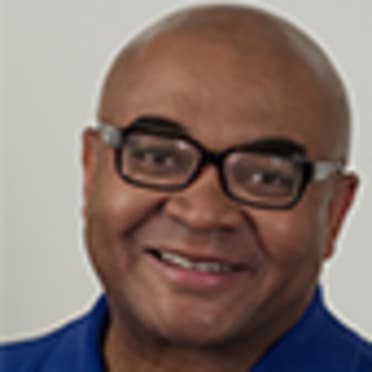Collegiate hitters on Rockies' Draft radar
Colorado's history favors high schoolers, but this year may be different
DENVER -- Look around the diamond and it appears the Rockies love drafting high-school players. Yet the buzz about the team’s top 2019 MLB Draft pick -- No. 23 overall -- centers on college prospects.
Charlie Blackmon is the only collegiate player the club drafted (second round out of Georgia Tech in 2008) in the regular lineup. Rockies-developed players Nolan Arenado, Trevor Story, Ryan McMahon and Brendan Rodgers all were drafted out of high school, and Raimel Tapia was signed as a teen in the Dominican Republic. But in three MLB Pipeline mock drafts, Colorado's picks have been collegiate players, with indications that the Rockies are focusing on a small group from that level. What gives?
“We liked the player, first and foremost,” said Bill Schmidt, Rockies vice president, scouting. “You have to give credit to player development for getting those guys up there. But those were the ones we liked as players at the time we picked, and it’s more a byproduct of that than anything else.”
The 2019 Draft will take place today through Wednesday, beginning with today's Draft preview show on MLB Network and MLB.com at 4 MT. MLB Network will broadcast the first 41 picks (Round 1 and Competitive Balance Round A), while MLB.com will stream all 78 picks on Day 1. MLB.com will also provide live pick-by-pick coverage of Rounds 3-10 on Day 2, beginning with a preview show at 10:30 a.m. MT/12:30 p.m. ET. Then, Rounds 11-40 can be heard live on MLB.com on Day 3, beginning at 10 a.m. MT/noon ET.
Go to MLB.com/Draft to see the Top 200 Prospects list, mock drafts from MLB Pipeline analysts Jim Callis and Jonathan Mayo, the complete order of selection and more. And follow @MLBDraft on Twitter to see what Draft hopefuls, clubs and experts are saying.
Here’s how the Draft is shaping up for the Rockies, whose first selection is the 23rd overall pick.
In about 50 words: The Rockies have nothing against high-school pitchers, either. While all current Rockies-drafted pitchers are collegiate, as is MLB Pipeline's No. 3 prospect, lefty Ryan Rolison of Ole Miss, the next three -- righties Peter Lambert (No. 4), Riley Pint (No. 7) and Ryan Castellani (No. 11) were drafted out of high school. Lambert and Castellani are in Triple-A.
What they’re saying: In this age of technology filtering down to the amateur ranks, with an emphasis on launch angle and exit velocity for hitters and extreme velocity for pitchers, Schmidt insists nothing has changed.
“We worked out Nolan Arenado and he never hit a home run. But he was able to hit line drives all over the field. He didn’t pop a ball up and he never mishit a ball. He worked out for Bill Geivett and our area scout, Jon Lukens. We’re looking for guys that have ball-striking ability and have hand-eye coordination.
“We’re looking for guys with good bat-to-ball skills, and pitchers who can throw it over the 17 inches of the plate with command.”
Who might they take? In MLB Pipeline mock first rounds, there has been an emphasis on collegiate hitters. On May 3, it was North Carolina first baseman-outfielder Michael Busch; on May 17, it was Missouri outfielder Kameron Misner.
Money matters: Under the Collective Bargaining Agreement, each team has an allotted bonus pool equal to the sum of the values of that club's selections in the first 10 rounds of the Draft. The more picks a team has, and the earlier it picks, the larger the pool. The signing bonuses for a team's selections in the first 10 rounds, plus any bonus greater than $125,000 for a player taken after the 10th round, will apply toward the bonus-pool total.
Any team going up to five percent over its allotted pool will be taxed at a 75-percent rate on the overage. A team that overspends by 5-10 percent gets a 75-percent tax plus the loss of a first-round pick. A team that goes 10-15 percent over its pool amount will be hit with a 100-percent penalty on the overage and the loss of a first- and second-round pick. Any overage of 15 percent or more gets a 100-percent tax plus the loss of first-round picks in the next two Drafts.
This year, the Rockies have a pool of $7,092,300 to spend in the first 10 rounds, including $2,926,800 to spend on their first selection.
Shopping list: With the cluster of college bats predicted to go where the Rockies are picking in the first round, that's where the Rockies are likely to go at 23. Beyond that, it's simply choosing the guy they like based on athletic ability and basic skill.
Trend watch: The Rockies have a young Major League rotation and are trying to develop relievers, since some veterans' contracts will expire in coming years. But none of this affects the “best player available” Draft philosophy. Schmidt said the club doesn’t earmark positions to stock with its later picks. That philosophy makes sense, since the club in recent years has had even its top prospects play multiple positions to increase their chances of making it up the chain.
The Rockies' recent top picks:
2018: Ryan Rolison, LHP, Ole Miss
2017: Ryan Vilade, INF, Stillwater (Okla.) High School
2016: Riley Pint, RHP, St. Thomas Aquinas High School, Overland, Kan.
2015: Brendan Rodgers, INF, Lake Mary (Fla.) High School
2014: Kyle Freeland, LHP, University of Evansville

